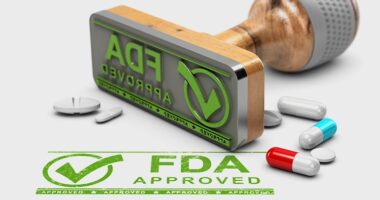Blockbuster Potential: Drugs to Watch for in 2015
What are the blockbusters of the future? A recent industry analysis points to the leading contenders from late-stage or newly approved drugs.
The commercial success of a drug is difficult to predict, but a recent analysis by Thomson Reuters points to 11 drugs either recently launched or in late-stage development, which are projected to be blockbuster drugs (defined as drugs with sales of $1 billion or more) by 2019. Table I outlines these drugs, which include products from the large pharmaceutical companies, such as AbbVie, Amgen, Bristol-Myers Squibb, Merck & Co, Novartis, Pfizer, and Sanofi, as well as products from Vertex Pharmaceuticals, Otsuka Pharmaceutical, and Lundbeck.
Drugs to watch for in 2015
Compared with 2014, the Thomson Reuters analysis points out there are more potential blockbusters expected to enter the market in 2015 (see Table I ). The majority of them are forecast to have 2019 sales of between $1 billion and $3 billion although three drugs are projected to exceed these revenue targets by 2019: Bristol-Myers Squibb's anti-cancer drug for treating melonoma, Opdivo (nivolumab) at nearly $5.7 billion; Regeneron Pharmaceuticals and Sanofi's Praluent (alirocumab) for treating hypercholesterolemia at $4.4 billion; and Novartis' LCZ-696, a drug for treating chronic heart failure, at $3.7 billion. LCZ-696, which is an angiotensin receptor-neprilysin inhibitor, consists of Novartis' angiotensin receptor blocker, Diovan (valsartan), and a new compound, sacubitiril, a neprilysin inhibitor. This year's other potential blockbuster entrants (see Table I ) are: Pfizer's Ibrance (palbociclib) for treating breast cancer; Vertex Pharmaceuticals’ combination therapy of lumacaftor and ivacaftor for treating cystic fibrosis; AbbVie's Vierkira Pak (veruprevir, ritonavir, ombitasvir, and dasabuvir) for treating hepatitis C virus (HCV) infection; Amgen's and Astellas Pharma's evolucumab for treating hypercholesterol/hyperlipidemia; Merck & Co.'s Gardasil 9 vaccine against human papillomavirus infection; Otuska Pharmaceutical's and Lundbeck's brexpiprazole for treating schizophrenia and depression; Sanofi's Toujeo (a new formulation for insulin glargine) for treating diabetes; and Novartis' Cosentyx (secukinumab) for treating psoriasis and psoriatic arthritis.
| Table I: Potential Blockbuster Entrants in 2015 Based on 2019 Projected Sales | |||
| Drug | Disease | Pharmaceutical Company | 2019 Forecast sales (US $billions) |
| Opdivo (nivolumab) | Melanoma | Bristol-Myers Squibb | $5.684 bn |
| Praluent (alirocumab) | Hypercholesterolemia | Regeneron Pharmaceuticals and Sanofi | $4.414 bn |
| LCZ-696 (sacubitril and valsartan) | Chronic heart failure | Novartis | $3.731 bn |
| Ibrance (palbociclib) | Breast cancer | Pfizer | $2.756 bn |
| lumacaftor and ivacaltor | Cystic fibrosis | Vertex Pharmaceuticals | $2.737 bn |
| Viekira Pak (veruprevir, ritonavir, ombitasvir, and dasabuvir) | Hepatitis C | AbbVie | $2.500 bn |
| evalocumab | Hypercholesterolemia/hyperlipidemia | Amgen and Astellas Pharma | $1.862 bn |
| Gardasil 9 | Vaccine against human papillomavirus infection | Merck & Co. | $1.637 bn |
| brexpiprazole | Schizophrenia and depression | Otsuka and Lundbeck | $1.353 bn |
| Toujeo (new formulation insulin glargine) | Diabetes | Sanofi | $1.256 bn |
| Cosentyx (secukinumab) | Psoriasis and psoriatic arthritis | Novartis | $1.082 bn |
| *Analysis based on data through early February 2015.
Source: Thomson Reuters (Cortellis Competitive Intelligence) |
|||
Key trends
Several key trends are noted in the Thomson Reuters analysis, which include the rise of immune-oncology approaches for treating cancer, innovation in treating cholesterol, the entry of a first-in-class drug to treat chronic heart failure, and the entry of additional all-oral regimes for treating HCV injection. Within the immune-oncology space, the Thomson Reuters analysis points to a key battle between two new melanoma drugs, Bristol-Myers Squibb's Opdivo (nivolumab) and Merck & Co,'s Keytruda (pembrolizumab). Sanofi's and Regeneron's Praluent (alirocumab) and Amgen's and Astellas Pharma's evolocumab are two top contenders in the anti-cholesterol market, and Novarti's LCZ-696 is a new entry for treating chronic heart failure. In the HCV market, top contenders are Gilead (with Sovaldi (sofosbuvir) and Harvoni (combination of sofosbuvir and ledipasvir), AbbVie (with Vierkira Pak (veruprevir, ritonavir, ombitasvir, and dasabuvir). and Merck & Co. (with its HCV combination of grazoprevir and elbasvir), for which a regulatory filing is planned in 2015.
The potential of Bristol-Myers Squibb's (nivolumab) is strong. The drug was first approved in Japan in September 2014, but it is the US market, where the potential is high, according to the Thomson Reuters analysis. The drug was approved in the US in late December 2014 for treating unresectable or metastatic melanoma and was launched in February 2015; an EU filing is under regulatory review. A rolling biologics license application for treating non-small-cell lung cancer (NSCLC) was also initiated in the US. 2019 projected sales are $5.684 billion (see Table I), competing against Merck & Co,'s Keytruda (pembrolizumab), which has 2019 projected sales of $3.466 billion, according to the Thomson Reuters analysis. Keytruda was approved in the US in 2014, and EU approval is pending for melanoma. The company also received FDA's Breakthrough Therapy Designation for treating NSCLC, and a filing is expected in the US in mid-2015.
The competition in the HCV market is also strong. AbbVie's Viekira Pak (veruprevir, ritonavir, ombitasvir, and dasabuvir) is an all oral HCV regime with projected 2019 sales of $2.5 billion (see Table 1 ), which will compete against Gilead Science's Harvoni (combination of sofosbuvir and ledipasvir), with 2019 projected sales of $6.697 billion, according to the Thomson Reuters analysis. Also in that space for 2015 will be Merck & Co.'s HCV combination of grazoprevir and elbasivr, with a US filing planned for the first half of 2015 and first sales in 2016 and projected 2019 sales of $2.167 billion expected in 2019.
Evaluating 2014 blockbuster entrants
Three drugs from 2014 that were identified as potential blockbusters from the Thomson Reuters analysis are still on track to achieve blockbuster status by 2019. Last year's potential blockbuster included Gilead Sciences' oral drug for treating HCV infection, Sovaldi (sofosbuvir), GlaxoSmithKline's and Theravance's Anoro Elipta (umeclidinium plus vilanterol) and Gilead Sciences' Zydelig (idelalisib) for treating chronic lymphocytic leukemia (CLL) and indolent non-Hodgkin's lymphomas, such as follicular B-cell non Hodgkin lymphoma (FL) and small lymphocytic lymphoma (SLL).
Sovaldi was Gilead's top-selling drug in 2014 and was one of the industry's top-selling drugs with 2014 sales of $10.28 billion, making it one of the most successful first-year launches for a new molecular entity. Sovaldi, which was approved by the US Food and Drug Administration in December 2013 and in the European Union in January 2014, was the first drug that demonstrated safety and efficacy to treat certain types of HCV infection without the need for co-administration of interferon, which is administered by injection. Sovaldi is a nucleotide analog inhibitor that blocks a specific protein needed by the hepatitis C virus to replicate, and that mechanism of action was considered an important advancement as well as the ability to administer the drug orally. The drug is forecasted to have sales of $10.5 billion in 2015, dropping slightly, and rise to $12.0 billion in 2019. Gilead's Harvoni, an oral combination of sofosbuvir and ledipasvir for treating HCV, was approved and launched in the US in October 2014 and is also forecasted to do well with peak sales of nearly $10.4 billion in 2017, according to the Thomson Reuters analysis.
GlaxoSmithKline's and Theravance Anoro Elipta entered the US market for treating chronic obstructive pulmonary disease in April 2014, was launched in the European Union in July 2014, and in Japan in September 2014. Projected 2019 sales are approximately $1.6 billion, which would exceed the developers' previous blockbuster, Relovair (fluticasone furoate plus vilanterol trifenatate), which is projected at $1.176 billion in 2019.
Another drug from 2014 still on track for blockbuster status by 2019 s Gilead's anticancer drug Zydelig, which was approved and launched in the US in July 2014 and received approval for CLL and FL in September 2014. Current forecasts show sales of approximately $649 million in 2017 and increasing to $1.041 billion by 2019.






